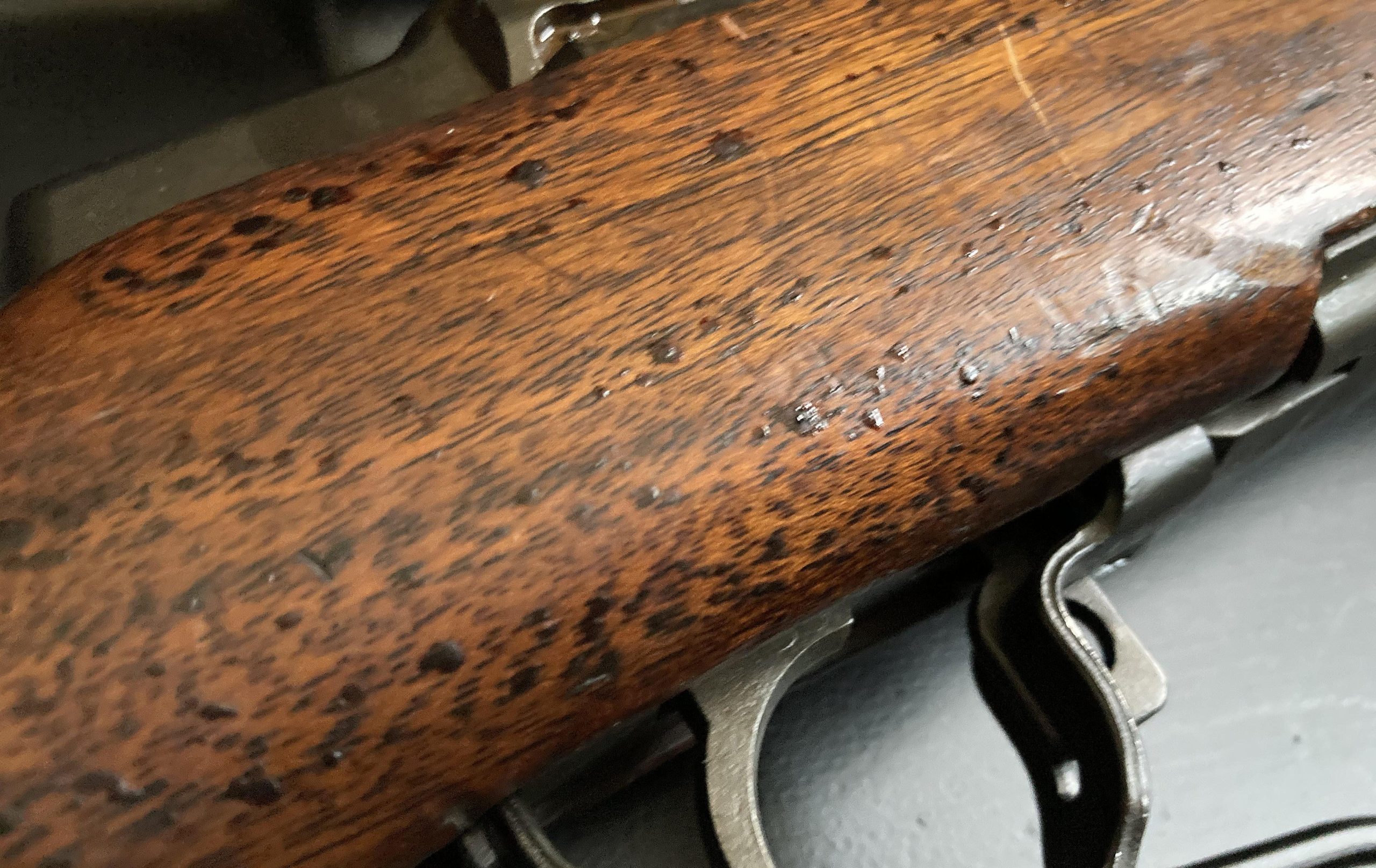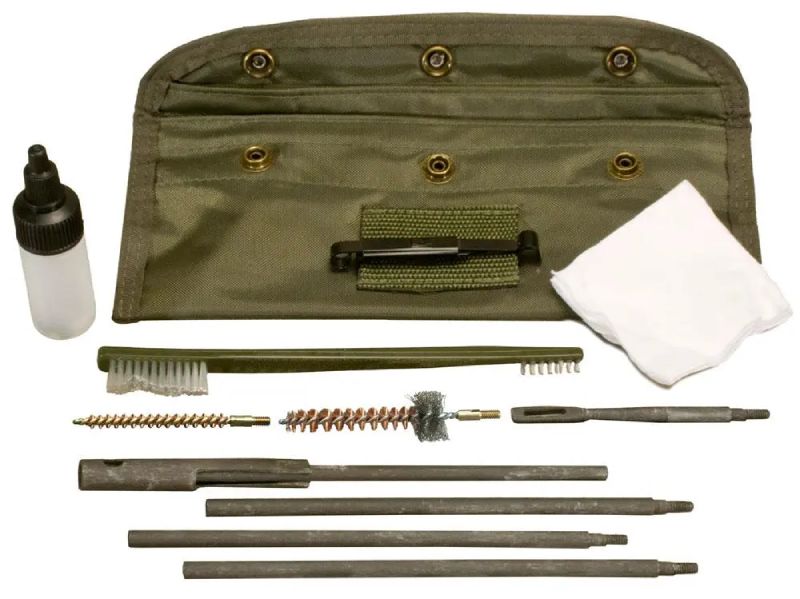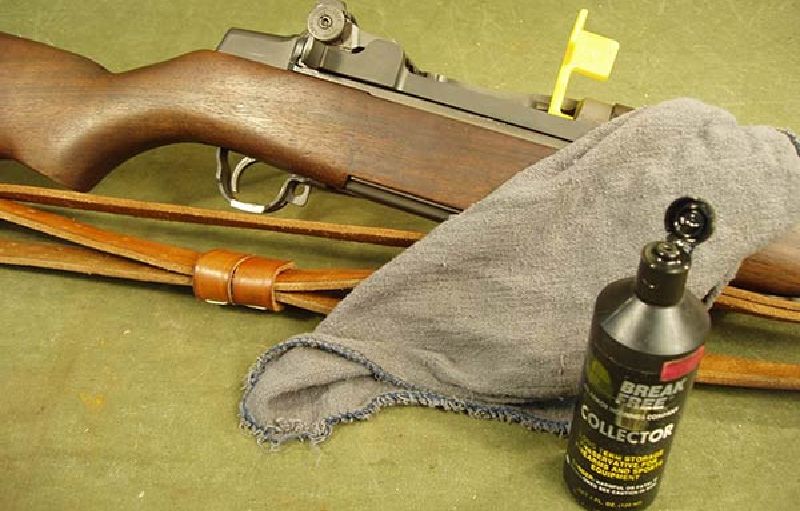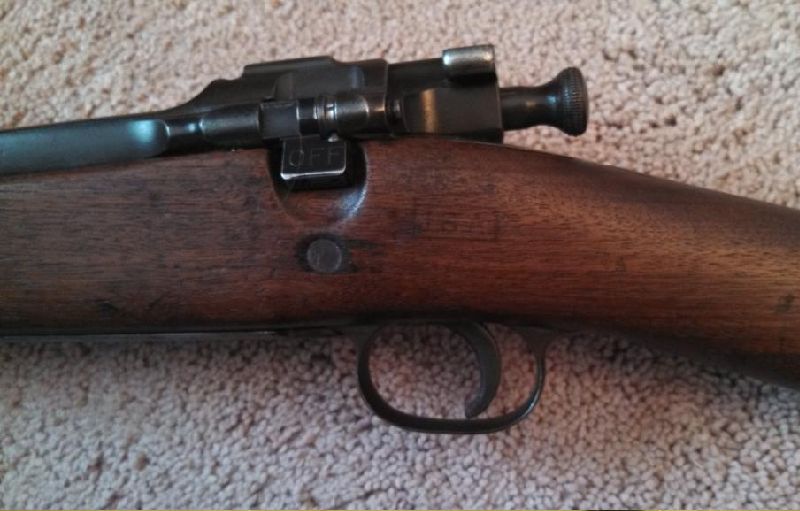Last Updated on July 5, 2023
When it comes to milsurp stocks, whether it’s an old rifle or a vintage firearm, proper cleaning and maintenance are essential. These stocks carry historical significance and often require special attention to preserve their integrity and functionality. In this comprehensive guide, we will walk you through the process of cleaning milsurp stocks, ensuring that you can maintain their beauty and performance for years to come.
Gathering the Necessary Tools and Materials
Before diving into the cleaning process, it’s crucial to gather the right tools and materials. Here’s a list of essential items you’ll need:
Tools:
- Screwdrivers (various sizes)
- Soft brushes (nylon or natural bristle)
- Cotton swabs
- Patches and cleaning rods
- Microfiber cloth
- Small hammer or mallet
- Sandpaper (various grits)
- Vice or padded clamp
Materials:
- Cleaning solvent (specific to the stock material)
- Lubricating oil or gun grease
- Finishing products (stain, varnish, or oil)
- Wood filler or epoxy (for repairs)
Additionally, ensure you have proper eye protection and work in a well-ventilated area to avoid inhaling any harmful fumes.
Preparing the Workspace
Before embarking on the cleaning process, it’s crucial to prepare a suitable workspace. Consider the following:
Choosing a Suitable Area for Cleaning:
Find a well-lit and well-ventilated space where you can comfortably work. Avoid areas with excessive dust or humidity, as they can adversely affect the cleaning process.
Setting Up a Cleaning Station:
Set up a dedicated cleaning station with a sturdy table or workbench. Lay down a soft cloth or rubber mat to protect the surface and prevent any damage to the stock or other components.
Protective Measures:
Wear gloves to protect your hands from solvents and sharp edges. It’s also advisable to cover the cleaning area with a disposable plastic sheet to catch any debris or spilled solvents.
Disassembly and Inspection
Now that you have your workspace ready, it’s time to disassemble the milsurp stock and inspect each component for damage or wear:
Step-by-Step Guide for Disassembling the Milsurp Stock:
Refer to the firearm’s manual or seek expert guidance to ensure a safe disassembly process. Each firearm may have unique disassembly steps, so it’s important to follow the appropriate instructions.
Inspecting Each Component for Damage or Wear:
Thoroughly examine the stock, focusing on areas prone to damage, such as the buttstock, forend, and checkering. Look for cracks, splits, dents, or any signs of wear that may affect the stock’s structural integrity.
Identifying Specific Areas That Require Special Attention:
Take note of any specific areas that need additional care. This could include intricate engraving, delicate inlays, or metal components attached to the stock. These areas may require specialized cleaning techniques or extra caution during the process.
Cleaning the Stock
With the disassembled stock in hand, it’s time to start the cleaning process and restore its original beauty. Follow these steps to effectively clean the milsurp stock:
Removing Dirt, Grime, and Rust:
Begin by gently removing any loose dirt or debris from the stock using a soft brush or cloth. For stubborn dirt or grime, dampen a cloth with a suitable cleaning solvent and carefully wipe the affected areas. Be mindful not to oversaturate the wood, as excessive moisture can cause damage.
If you encounter rust on metal components, use a rust remover or fine-grade steel wool to gently remove the oxidation. Ensure that the cleaning solvent or rust remover is compatible with the specific metal type to avoid causing any harm.
Choosing the Right Cleaning Solvents for Different Materials:
The choice of cleaning solvent depends on the material of the milsurp stock. Different solvents work better on specific types of wood or finishes. Research the appropriate solvent for your particular stock material and follow the manufacturer’s instructions.
For wooden stocks, mineral spirits or denatured alcohol are commonly used to dissolve dirt and grime. If the stock has a varnish or oil finish, use a mild soap or specialized wood cleaner to preserve the existing finish.
When dealing with synthetic or composite stocks, check the manufacturer’s recommendations for cleaning solvents. In most cases, mild soapy water or dedicated plastic cleaner should suffice.
Techniques for Deep Cleaning and Removing Stubborn Stains:
If the stock requires deep cleaning or has stubborn stains, you may need to employ additional techniques:
For heavily soiled wood, you can make a cleaning solution by diluting mild dish soap in water. Dampen a soft cloth with the solution and gently scrub the affected areas. Rinse the cloth frequently and avoid saturating the wood.
If the milsurp stock has ingrained stains or discoloration, try using a mixture of baking soda and water to create a paste. Apply the paste to the stained area, let it sit for a few minutes, and then gently scrub with a soft brush. Rinse thoroughly and dry the stock afterward.
Always test any cleaning solutions or techniques on a small, inconspicuous area of the stock before applying them to the entire surface.
Restoring and Repairing Damaged Stock
During the inspection, if you discovered cracks, splits, or other damage on the milsurp stock, it’s crucial to address them to restore its structural integrity. Follow these steps for stock restoration and repair:
Repairing Cracks or Splits in the Wood:
If you encounter small cracks or splits in the wood, apply wood filler or epoxy specifically designed for stock repairs. Clean the affected area, apply the filler or epoxy according to the manufacturer’s instructions, and gently smooth it using a putty knife or a soft cloth. Allow it to dry completely before sanding and refinishing.
Removing Dents and Scratches:
Dents and scratches can be a common issue with milsurp stocks. To remove small dents, use a clean, damp cloth and place it over the affected area. Apply steam from an iron (set to low heat) or a heat gun at a safe distance to raise the wood fibers. Once the wood has expanded, remove the cloth and let the area dry naturally. For deeper scratches, use fine-grade sandpaper to gently sand the surface, following the grain of the wood. Gradually work your way to finer grits of sandpaper until the scratch becomes less noticeable. Finish by buffing the area with a soft cloth.
Restoring the Original Finish:
If the milsurp stock has a worn or faded finish, you can restore its original luster by refinishing it. Start by sanding the entire surface with a medium-grade sandpaper to remove any remaining finish or imperfections. Make sure to sand with the grain of the wood. Afterward, progress to finer grits of sandpaper for a smooth finish.
Once the stock is sanded, you can apply a suitable stain or wood finish according to your preference. Follow the manufacturer’s instructions for proper application techniques and drying times. Apply multiple coats if necessary, allowing each coat to dry completely before adding the next. Finish by applying a protective layer of varnish, oil, or wax to seal and protect the stock.
Applying Protective Measures
After cleaning and restoring the milsurp stock, it’s essential to apply protective measures to maintain its condition. Here are some tips:
Using Appropriate Oils and Lubricants:
Apply a thin coat of high-quality gun oil or grease to metal components and moving parts to prevent corrosion and ensure smooth operation. Use a cotton swab or cloth to distribute the lubricant evenly, and wipe off any excess to avoid attracting dirt or dust.
Preserving the Stock’s Condition for Long-Term Storage:
If you plan to store the milsurp stock for an extended period, ensure it is in a climate-controlled environment. Apply a thin layer of protective oil or wax to the wood surface to prevent drying out and cracking. Regularly inspect and reapply the protective layer as needed.
Tips for Regular Maintenance and Care:
Maintaining the cleanliness and condition of the milsurp stock is an ongoing process. Here are some tips for regular maintenance:
- Regularly inspect the stock for any signs of damage or wear and address them promptly.
- Wipe down the stock after each use to remove dirt, fingerprints, and moisture.
- Avoid exposing the stock to extreme temperature fluctuations or prolonged exposure to sunlight, as these can cause damage.
- Store the firearm with the stock properly supported and protected to prevent accidental damage.
Reassembly and Final Inspection
Once the milsurp stock is cleaned, restored, and protected, it’s time to reassemble the firearm and conduct a final inspection:
Reassembling the Cleaned Components:
Follow the disassembly steps in reverse order to reassemble the firearm. Take care to ensure proper alignment and fit of each component.
Checking for Proper Fit and Alignment:
Once reassembled, check that all components fit correctly and securely. Test the firearm’s functionality by cycling the action and performing any necessary safety checks according to the manufacturer’s instructions.
Final Inspection to Ensure Cleanliness and Functionality:
Inspect the milsurp stock and the firearm as a whole to ensure that all cleaning residues and debris have been removed. Check for any remaining signs of damage or wear and address them as needed. Verify that the stock’s finish is smooth, even, and protected.
Conclusion
Cleaning and maintaining milsurp stocks require patience, attention to detail, and the right tools and materials. By following the steps outlined in this comprehensive guide, you can effectively clean and restore the beauty and functionality of your milsurp stock.
Remember, regular cleaning and maintenance are key to preserving the historical significance and longevity of these stocks. Treat them with care, address any damage or wear promptly, and store them in suitable conditions to ensure their continued enjoyment for years to come.
If you encounter any complexities or have concerns about specific components or materials, don’t hesitate to seek expert advice or consult with professionals who specialize in milsurp stock restoration. Their expertise can provide valuable insights and guidance tailored to your specific situation.
By dedicating time and effort to cleaning and maintaining your milsurp stock, you not only preserve its historical value but also enhance its aesthetics and performance. So roll up your sleeves, gather your tools, and embark on the journey of restoring these fascinating pieces of history!
Frequently Asked Questions
How often should I clean my milsurp stock?
Can I use any cleaning solvent on my milsurp stock?
How do I protect the stock from humidity and temperature fluctuations?
Can I repair significant cracks or splits in the stock myself?
What should I do if the stock has delicate engravings or inlays?
Can I use regular household cleaning products on synthetic or composite stocks?
Is it necessary to disassemble the entire firearm to clean the milsurp stock?
How long does the stock refinishing process typically take?
Can I use general-purpose lubricants on the stock?
How can I maintain the stock’s finish over time?
- Avoid exposing the stock to direct sunlight for extended periods, as it can cause fading and discoloration.
- Wipe down the stock after each use to remove dirt and moisture.
- Apply a thin layer of protective oil or wax periodically to prevent drying out and cracking.
- Regularly inspect the stock for any signs of wear or damage and address them promptly to prevent further deterioration.
About The Author

Orochi Konya is a student of the web. He has been dabbling in it since he was young, and has become an expert in his own right. He loves all things digital, from making websites to programming to social media. In his spare time, Orochi enjoys indulging in his other passion: music. He loves listening to all kinds of music and often spends hours creating playlists on Spotify. He also enjoys drawing manga and watching anime in his free time. Orochi is a friendly pop-culture guru who is always happy to chat about the latest trends in both Japan and the U.S.





